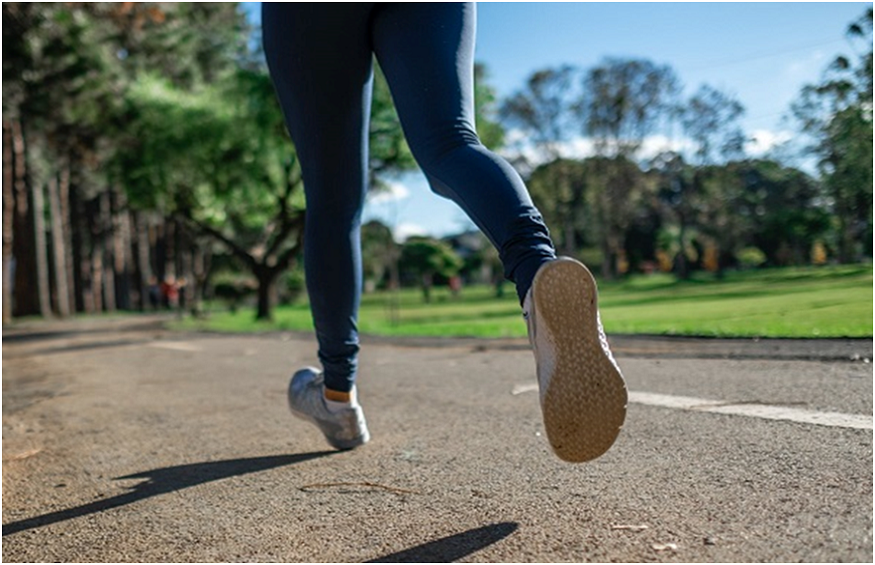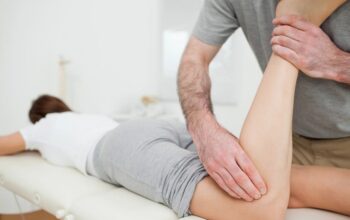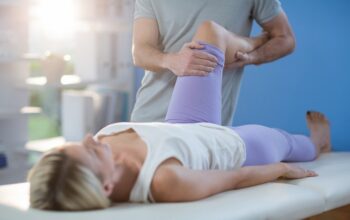If you are a runner, walker or hiker you may be familiar with pain along the outside of the knee. Runners in particular can be susceptible to suffering from pain in this area, specifically ITB pain.
ITB stands for Iliotibial Band, which is a strong, thick band of fibrous tissue running from the hip, along the outside of the thigh and into the knee, to the top of the shinbone. The ITB acts a bit like a tendon, helping to transfer force to and from the hip and the outside knee, stabilising the pelvis and helping with posture control.
What Causes ITB Pain?
Running injuries are caused by an imbalance in running volume and tissue capacity – in other words, doing too much too quickly – and ITB knee pain is the same. Often this pain can be related to an increase in training, such as running longer distances, a big race coming up or a change in terrain to what you are used to. It can also occur when there has been a break from training and when starting again, putting too much strain on your legs too soon. This sudden increase in load on your legs can cause damage and pain, regardless of how fit you are aerobically.
The ITB is connected to the lateral femoral condyle, which is one of the projections on the lower extremity of the femur bone in the thigh. It sits on the outside of the knee. When the legs are overloaded, fat tissue that provides padding between the ITB and the lateral femoral condyle is compressed when the knee bends past 30 degrees and the maximum tension in the ITB is reached. The compression of this fat results in pain.
Pain will be felt over the lateral femoral condyle as the knee bends and straightens. Running downhill or on narrow trails makes things worse, as this particular movement places increased load through the ITB. When going downhill, the body is constantly trying to decelerate which puts a lot of pressure on the knees, which will be transferred to the ITB and into the hip.
ITB injuries are pretty persistent and can be difficult to overcome, possibly lingering for months. Runners will rest when the outside of the knee becomes sore and resting will see some improvement in pain levels. However, once they begin running again the pain will return.
During full rest, legs become deconditioned quite quickly and lose their running capacity. Over time the running capacity can continue to decrease. Undergoing some rehab can really assist runners to keep running, while reducing pain and staying safe. It may involve decreasing distances, adding in some rest days or no longer running downhill or on narrow trails.
Help For ITB Pain
What NOT To Do
Once you start experiencing ITB pain, first it is important to STOP doing the following as they can make the symptoms worse:
Downhill running and walking – this is often the cause of the ITB pain in the first place.
Stretching – stretching the ITB can cause increased compression and make the pain worse. The ITB is only able to lengthen very minimally, so stretching won’t help.
Full rest – unless pain levels are extreme, full rest will result in deconditioning so focus on some running within your tolerance levels.
Rolling the ITB – using a foam roller or similar to try and loosen the ITB will not work like it may on a tight muscle. It is likely to irritate it further as it can increase compression of the fat.
Rehab Tips
There are a few things that will help get you up and running again.
Safe running levels – as mentioned, don’t stop running completely. Keep running at a level where pain is minimal, and don’t run every day or try interval training. Gradually increase each week. Changing your cadence to using a slightly wider stance may also help.
Improve hip strength – ITB pain will cause a loss of strength in the hip so exercises to build up this area are beneficial. Also improve deficits in the kinetic chain by working on calves and quads. A qualified sports physiotherapist will be able to give you tailored exercises to suit your injury and tolerance.
Uphill running – walking and running uphill is a great way to maintain fitness. Using a treadmill on an incline is a very safe activity while dealing with ITB pain. The uphill movement avoids the compression zone of the knees flexing 30 degrees.
Knee physiotherapy should be considered for assessment and treatment of knee pain, including damage to the ITB. Sports physiotherapists can confirm that your pain is caused by ITB compression and will be able to create a specific treatment plan so you stay safe but active while recovering. The team at Melbourne Sports Physiotherapy are experts in knee and leg injuries and are dedicated to get you moving pain-free as quickly as possible.




